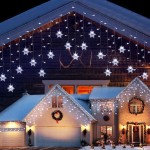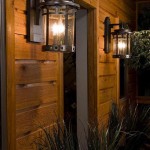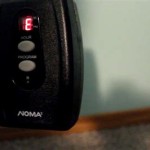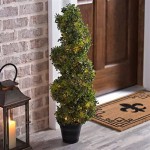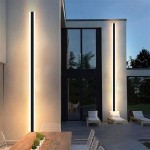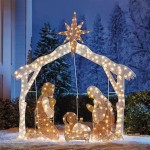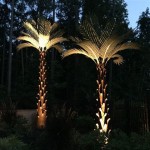Outdoor Flood Lights: Settings and Considerations
Outdoor flood lights are essential for enhancing security, illuminating walkways, and creating a welcoming ambiance around homes and businesses. With numerous settings available, choosing the right configuration for your specific needs can be overwhelming. Understanding the various settings and their impact on your property is crucial for optimal performance and functionality.
Types of Settings
Outdoor flood lights offer a wide range of settings to control their functionality, including:
- Brightness: Measured in lumens, brightness determines the amount of light emitted by the fixture. Higher lumens mean brighter illumination, suitable for larger areas or security purposes. Lower lumens are sufficient for smaller spaces or decorative purposes.
- Color Temperature: Measured in Kelvin (K), color temperature influences the color cast of the light. Warm white (2700-3000K) creates a cozy and inviting atmosphere, while cool white (4000-4500K) provides a crisper, brighter light ideal for security and visibility. Daylight white (5000-6500K) mimics natural sunlight, often used in commercial applications.
- Light Beam Angle: This setting defines the width and spread of the light beam. Narrow beams (15-30 degrees) concentrate the light in a specific area, ideal for highlighting features or security purposes. Wide beams (60-120 degrees) illuminate a broader area, suitable for general illumination or walkways.
- Motion Sensor: Motion sensors automatically switch on the flood lights when movement is detected, creating a deterrent against intruders and enhancing security. They can be adjusted for sensitivity, activation distance, and duration of activation.
- Timer: Timers allow you to schedule the operation of the flood lights, turning them on and off automatically at specific times. This feature is particularly useful for security purposes, deterring crime during the night, or creating a welcoming atmosphere for guests.
- Photocell: Photocells automatically turn on the lights at dusk and off at dawn, ensuring illumination only when needed. They are energy efficient and convenient, eliminating the need for manual control.
Factors to Consider for Optimal Settings
Choosing the right settings for your outdoor flood lights involves considering several factors:
1. Purpose of the Lights
The primary function of your flood lights will determine the appropriate settings.
- Security: For security, consider bright, cool white lights with wide beams, motion sensors, and timers to deter intruders and illuminate potential threats.
- Illumination: If your primary goal is to illuminate walkways or driveways, choose a light with sufficient lumens and a wide beam angle for optimal visibility.
- Decorative: For decorative purposes, consider warm white lights with narrower beams to highlight specific features or create a welcoming ambiance.
2. Property Size and Layout
The size and layout of your property will dictate the number of flood lights needed and the appropriate beam angles.
- Large areas: Consider multiple flood lights with wide beams to cover a large area effectively.
- Narrow spaces: Use fewer flood lights with narrower beams to avoid over-illumination and potential glare.
- Obstacles: Position the lights strategically to avoid casting shadows or glare on walkways or doorways.
3. Environmental Conditions
Outdoor conditions such as weather, surrounding foliage, and ambient light levels can affect the performance of your flood lights.
- Heavy rain: Choose lights with weatherproof ratings to ensure proper functionality and prevent damage.
- Trees and shrubs: Consider the impact of surrounding vegetation on light distribution and adjust placement accordingly.
- Streetlights: If your property is well-lit by streetlights, you might need fewer or less powerful flood lights.
4. Energy Efficiency
Energy efficiency is a crucial consideration for outdoor lighting. LED flood lights are more energy-efficient than traditional incandescent bulbs, consuming less energy and lasting longer.
- LED technology: Choose fixtures with LED bulbs for energy savings and longevity.
- Motion sensors and timers: Employ these features to minimize unnecessary light usage, further reducing energy consumption.
- Photocells: Utilize photocells for automatic activation and deactivation, minimizing waste.
By considering these factors and carefully selecting the appropriate settings, you can ensure your outdoor flood lights meet your specific needs and enhance the security, functionality, and ambiance of your property.

Understanding Motion Lighting

120 Led Solar Security Light Black Spv Lights

Tips For Setting Up Your Motion Sensor Floodlight

Linkable Twin Head Smd Led Outdoor Solar Flood Light 1500 Lumens 500 Home Zone Security

How To Adjust Your Sensor Light Metro Electrical 24 Hour Electricians

Led Flood Lights What You Need To Know

Leonlite Motion Sensor Led Security Light Dusk To Dawn Outdoor Flood Lights Adjustable 2 Head Ip65 Waterproof 20w 150w Equiv 5000k Daylight Com

Commercial Electric Dusk To Dawn Sensor White Exterior Outdoor Twin Head Led Flood Light Security 1200 2400 Lumens 4000k Wet Rated 51405192 The Home Depot

Heath Zenith Motion Light Features Dualbrite R Intelligent Lighting Control Settings

4 Tips For Outdoor Security Lighting Haas Sons
